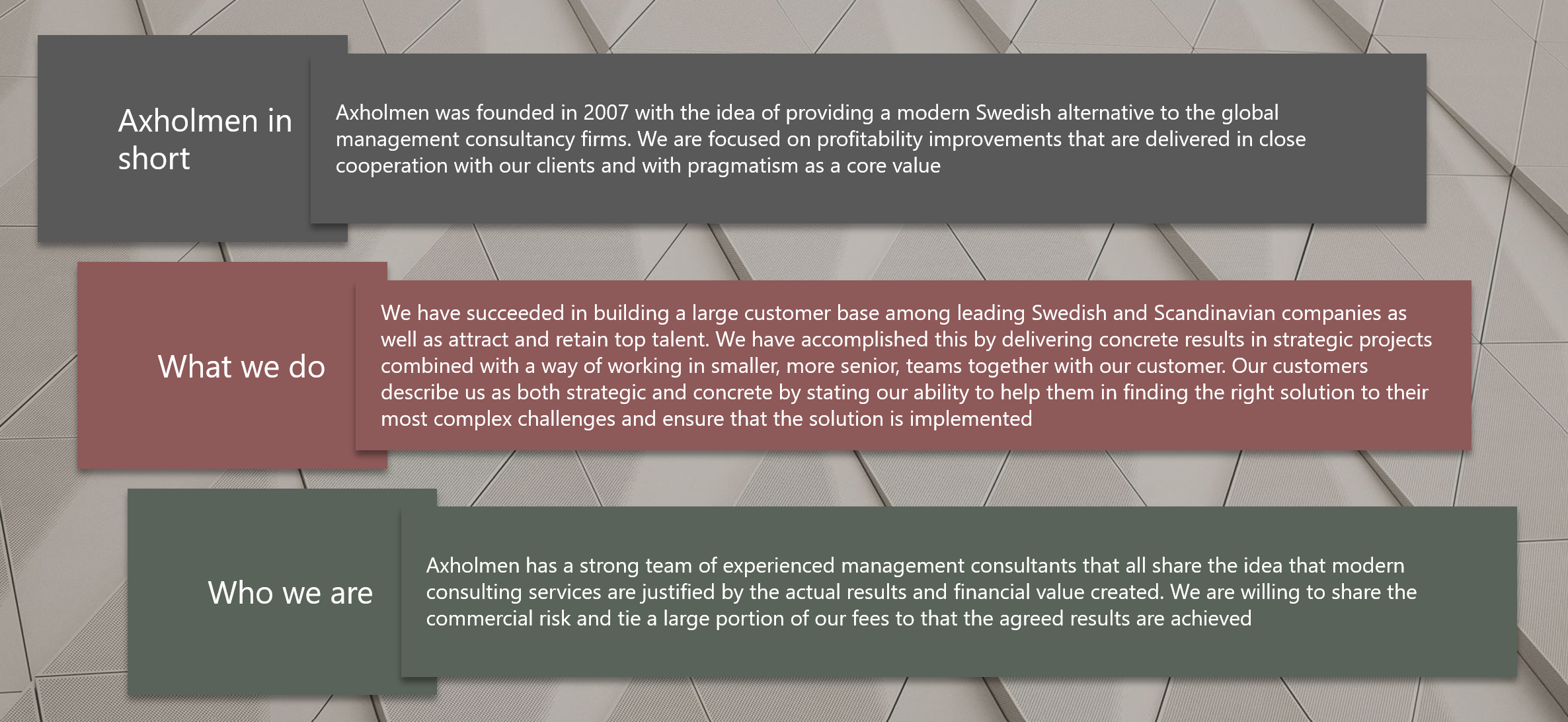COMMON UNDERSTANDING OF NEEDS
It is crucial that those affected by the change understand and accept the underlying drivers. There must be clarity about why it is not possible to continue as before, e.g. due to high costs compared to competitors or loss of market share.
However, it is not enough to communicate the drivers. It is equally important to demonstrate them in action – something that is often forgotten. Management cannot say one thing and then act in another way – e.g., flying business class while the company needs to make savings.
We see failure of communicating “why” as the main reason to why companies fail to anchor. Management must show perseverance and maintain a consistent line throughout the change to succeed.
SHARED VISION
In addition to communicating why the change is needed, the message must also paint a picture of the target state. An appealing vision that is sustained throughout the change is needed to motivate the organization to want to support the change and will get everyone pulling in the same direction. Such a vision could be “when we have successfully implemented the change, we can”:
- Regain our market position
- Hire employees again
- Survive as a company
The vision can be described in different ways – in words, in pictures, in numbers, or any in combination of these.
MAKING CHANGE CONCRETE
The third element that should not be missed in the communication is a concretization of what the change means. The change journey needs to be broken down so that employees can grasp what it initially means for them. They need to understand their own role in the change and how they can make a difference.
Making the change concrete does not necessarily mean presenting a detailed time and activity plan for the entire implementation, but it should at least describe the first steps of the change and how they will be implemented. For example, a first step could be for the head of each department to organize a team meeting to discuss with employees how that department can contribute to the change objectives of the company as a whole. This helps employees understand and gives them the tools to be able to contribute to the change.












